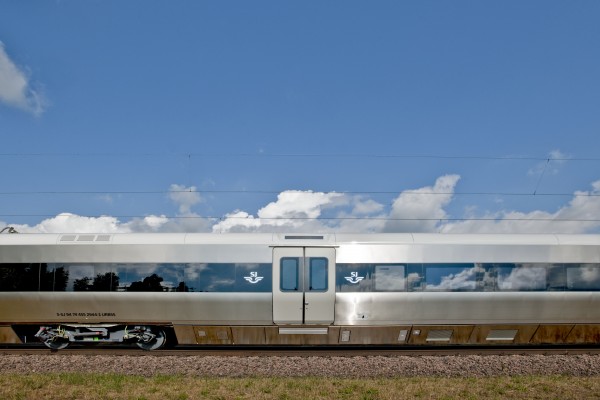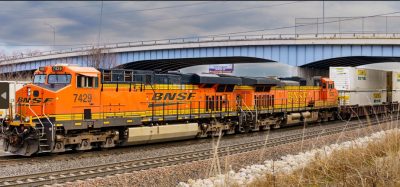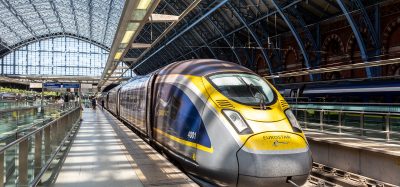SJ – from Public Authority to Limited Liability Company
Posted: 20 September 2010 | | No comments yet
It is difficult to pinpoint the event that was the most important in SJ’s 150-year history. Was it when the government took over all of the country’s private railways in 1939? Was it when the infrastructure maintenance division was spun off in 1988? Was it the introduction of the X2000 trains in the early 1990s or the start of online ticket sales in 1997? No one can really determine which event or which decade affected SJ most, but even the most recent one has been tumultuous for SJ.
It is difficult to pinpoint the event that was the most important in SJ’s 150-year history. Was it when the government took over all of the country’s private railways in 1939? Was it when the infrastructure maintenance division was spun off in 1988? Was it the introduction of the X2000 trains in the early 1990s or the start of online ticket sales in 1997? No one can really determine which event or which decade affected SJ most, but even the most recent one has been tumultuous for SJ.
It is difficult to pinpoint the event that was the most important in SJ’s 150-year history. Was it when the government took over all of the country’s private railways in 1939? Was it when the infrastructure maintenance division was spun off in 1988? Was it the introduction of the X2000 trains in the early 1990s or the start of online ticket sales in 1997? No one can really determine which event or which decade affected SJ most, but even the most recent one has been tumultuous for SJ.
Ten years ago the parliament – the Swedish Riksdag – decided that SJ would no longer be a Public Authority, but a Limited Liability Company, and also managed as a company – a major change for everyone. Previous internal suppliers would become external companies. We at SJ and our suppliers would become more commercial, the limits of what we do and what suppliers do would become clear. It would be easier to maintain and improve the quality when everyone no longer thought they had to do everything.


Transparent operations
When a Public Authority becomes a Limited Liability Company, even clearer demands are placed on financial accounting, thus increasing transparency for the owner and other external stakeholders, as well as for those who are responsible for the operations, including the management at that time. It was found that relatively large parts of SJ’s activities were not commercially or financially sustainable, either in the short or long-term. On the contrary, there were clear hints of cross-subsidies within SJ.
In 2002, SJ ran out of ‘shareholders’ equity’. The owner (the Swedish taxpayers) had to provide a capital injection of SEK 1.8 billion in order for SJ to avoid bankruptcy.
When the operation was audited it became clear that the supply of routes had to be governed more by demand, not by last years’ timetable, tradition, custom or old habit.
Dynamic pricing
A key strategic decision for the success of SJ and train travel in Sweden was the introduction of dynamic pricing in 2004, where the price of a ticket is governed by supply and demand. Passengers can easily purchase very inexpensive tickets if they choose unattractive departure times. If a passenger chooses a departure that everyone else wants, the price of the ticket increases.
Another factor is that tickets are cheaper the earlier they are purchased. The cheapest tickets are released three months prior to departure and the price rises as the departure time approaches. The tickets are most expensive the week before departure. This means that passengers who can plan ahead, or are flexible and can choose a less attractive departure in the middle of the day, can travel very cheaply. Those who are not as flexible, usually business travellers, or those who decide to travel shortly before departure, have to pay more.
90% of all passengers travel cheaper
Quite simply, the pricing model means that business passengers who often pay full price help those who buy low-priced tickets. Conversely, if low-priced tickets did not make a positive contribution to economic performance, full-price tickets would have cost more. When train occupancy is high, it means that all of our passengers contribute so that tickets do not have to cost more. And these are not just empty words; between 2006 and 2008, all fares on Swedish trains dropped by 7%, according to the Statistics Sweden, while inflation has risen just as much. Ninety percent of all passengers travel cheaper today than with the old fixed price list and no one travels more expensively.
The variable pricing model allows us to offer a ticket for every need and every budget – as well as higher profitability because the trains are filled better. Over the past decade, passenger growth has been between 5% and 10% per year with cumulative growth of approximately 50%. And, not least, over the past six years, SJ generated a surplus of SEK 3,273 million.
Most deregulated market in Europe
The Swedish rail market is one of the most deregulated and competitive markets in Europe. In total, including freight, approximately 20 train operators are active in Sweden, which creates a situation where the customers’ ability to set standards of quality and service requirements are constantly increasing.
Over the last few years, SJ has developed strongly. We would never have come so far without competition and without preparing ourselves for even more competition. And in 2009, the Swedish Riksdag decided that the entire rail market would be subject to competition, without exception.
When competition is fully implemented in December 2011, SJ will be strong. We want Swedish rail traffic to be an international example of how it is possible to change a 150-year old railway tradition into a modern and efficient service market, where SJ and other players are commercially viable on their own financial terms.
Own merit means sustainability
A rail market that is good for the passengers and benefits society does not rely on government aid and is profitable for its owners. Competition must be on equal terms to be socially beneficial in both the short- and longterm, and throughout Europe, which places demands on regulations, authorities and institutions that lay the legal foundation for this purpose. Ensuring that this works in practice requires much more than just opening the borders to other operators in individual countries in Europe. If government-owned rail operators which receive government subsidies for their operations are given access to these markets, companies that are run based on their own merits will be pushed out by those that receive assistance. The situation may work in the short-term, but it is not sustainable in the long run, not unlike the old planned economies.
The railway will shape the future of Europe even more when society imposes greater demands for efficient and environmentally friendly transportation. SJ is one of several companies operating today and in the future on a commercial basis in order to manage investments to develop a sustainable business and offers to customers. We believe that a sound, sustainable train operation in Europe has to build on rational decisions, commercial ground and on predictable, equal terms.
Invest in train and infrastructure
But not to forget, our trains will stand at the centre of these future requirements. SJ’s fleet of high-speed trains is now 15-20 years old, which requires more maintenance and investments in order for the trains to maintain a high standard and thus be able to arrive and depart on time. In the early 2000s, SJ invested SEK 3 billion in new regional traffic, which became fully operational in 2004. We are investing SEK 2 billion in 20 new high-speed trains that will come into service in 2011. This autumn, a decision is planned for an additional 20 new trains to replace the existing X-2000 fleet, an investment estimated at approximately SEK 6 billion.
For Sweden, the infrastructure is at least as challenging as the rest of Europe, if not larger. The capacity of the Swedish conventional network has reached its limits. Construction began on today’s railway tracks in 1860; they have lasted for 150 years. We must build more tracks in order to increase traffic. One hundred years ago, 10 trains departed from Stockholm central railway station daily; today there are 600 departures and there could be many more. Competition also requires sufficient capacity in the track system.
The future lays in high-speed
We must also look a little further into the future. Sweden must catch up to many of the countries in Europe that have recognised and fully taken advantage of the opportunities and potential of high-speed trains. The need for high-speed trains is urgent between our major regions – within which 75% of Sweden’s population lives and works. The population density is the same as in Spain, where high-speed trains have been an enormous success in terms of both the environment and standard of living. With the proposed high-speed rail network, passenger rail service could be doubled compared with current track capacity. The rest of Europe is rapidly expanding its high-speed network and SJ wants to encourage Sweden to reach a decision on this matter.
High-speed rail is the sustainable way to meet population growth and the need for inter-regional travel in the future.
About the Author
Elisabeth Lindgren
Elisabeth Lindgren holds a Masters of Business Administration at Stockholm School of Economics and has been employed at SJ since 2007. She has considerable experience as a Director and being in managerial positions; within the bank and finance sector as well as the recruitment sector. In addition to this, she has experience with staffing, education, skills enhancement, consulting and down and upsizing.








